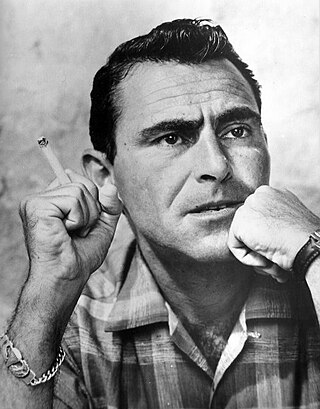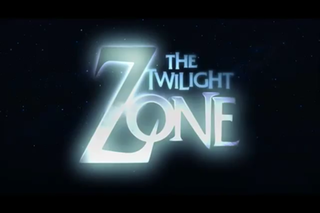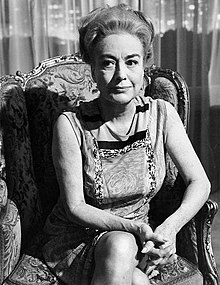
Richard Burton Matheson was an American author and screenwriter, primarily in the fantasy, horror, and science fiction genres.

The Twilight Zone is an American media franchise based on the anthology television series created by Rod Serling in which characters find themselves dealing with often disturbing or unusual events, an experience described as entering "the Twilight Zone". The episodes are in various genres, including fantasy, science fiction, absurdism, dystopian fiction, suspense, horror, supernatural drama, black comedy, and psychological thriller, frequently concluding with a macabre or unexpected twist, and usually with a moral. A popular and critical success, it introduced many Americans to common science fiction and fantasy tropes. The first series, shot entirely in black-and-white, ran on CBS for five seasons from 1959 to 1964.

Rodman Edward Serling was an American screenwriter and television producer best known for his live television dramas of the 1950s and his anthology television series The Twilight Zone. Serling was active in politics, both on and off the screen, and helped form television industry standards. He was known as the "angry young man" of Hollywood, clashing with television executives and sponsors over a wide range of issues, including censorship, racism, and war.
"Walking Distance" is episode five of the American television series The Twilight Zone. It originally aired on October 30, 1959. The episode was listed as the ninth best episode in the history of The Twilight Zone by Time magazine.
"A World of His Own" is episode thirty-six of the American television anthology series The Twilight Zone. It was the last episode of the show's first season and essentially comedic in tone. It originally aired on July 1, 1960, on CBS.
"The Night of the Meek" is episode 47 of the American television anthology series The Twilight Zone. It originally aired on December 23, 1960, on CBS. It was one of the six episodes of the second season which were shot on videotape in a short-lived experiment aimed to cut costs.
"It's a Good Life" is the eighth episode of the third season of the American television series The Twilight Zone, and the 73rd overall. It was written by series creator/showrunner Rod Serling, based on the 1953 short story "It's a Good Life" by Jerome Bixby. The episode was directed by James Sheldon, and is considered by some, such as Time and TV Guide, to be one of the best episodes of the series. It originally aired on November 3, 1961. The episode was one of four from the original 1959 series which formed the basis of the 1983 film Twilight Zone: The Movie.
An Occurrence at Owl Creek Bridge is a 1961 French short film, almost without dialogue. It was based on the 1890 American short story of the same name by American Civil War soldier, wit, and writer Ambrose Bierce. It was directed by Robert Enrico and produced by Marcel Ichac and Paul de Roubaix with music by Henri Lanoë. It won awards at the Cannes Film Festival and the Academy Awards. The film was later screened on American television as episode 22 of the fifth season of The Twilight Zone on 28 February 1964.

The Twilight Zone is an anthology television series which aired from September 27, 1985, to April 15, 1989. It is the first of three revivals of Rod Serling's acclaimed 1959–64 television series, and like the original it featured a variety of speculative fiction, commonly containing characters from a seemingly normal world stumbling into paranormal circumstances. Unlike the original, however, most episodes contained multiple self-contained stories instead of just one. The voice-over narrations were still present, but were not a regular feature as they were in the original series; some episodes had only an opening narration, some had only a closing narration, and some had no narration at all. The multi-segment format liberated the series from the usual time constraints of episodic television, allowing stories ranging in length from 8-minutes to 40-minute mini-movies. The series ran for two seasons on CBS before producing a final season for syndication.
Twilight Zone literature is an umbrella term for the many books and comic books which concern or adapt The Twilight Zone television series.
The Twilight Zone is a nationally syndicated radio drama series featuring radio play adaptations of the classic 1959–1964 television series The Twilight Zone. The series was produced for the British digital radio station BBC Radio 4 Extra airing for 176 episodes between October 2002 and 2012. In the United States, it aired on nearly 200 radio stations including WCCO, KSL, KOA, WIND, XM Satellite Radio channel 163 and Sirius XM Book Radio. Most of the stations aired two episodes each week, usually on the weekends and many times back to back.

The Twilight Zone is an American fantasy science fiction horror anthology television series created and presented by Rod Serling, which ran for five seasons on CBS from October 2, 1959, to June 19, 1964. Each episode presents a standalone story in which characters find themselves dealing with often disturbing or unusual events, an experience described as entering "the Twilight Zone", often with a surprise ending and a moral. Although often considered predominantly science-fiction, the show's paranormal and Kafkaesque events leaned the show much closer to fantasy and horror. The phrase "twilight zone", inspired by the series, is used to describe surreal experiences.

"Treehouse of Horror IV" is the fifth episode of the fifth season of the American animated television series The Simpsons and the fourth episode in the Treehouse of Horror series of Halloween specials. It originally aired on the Fox network in the United States on October 28, 1993, and features three short stories called "The Devil and Homer Simpson", "Terror at 5+1⁄2 Feet", and "Bart Simpson's Dracula".

The Sixth Sense is an American paranormal thriller television series featuring Gary Collins and Catherine Ferrar. The series was produced by and filmed at Universal Studios, and broadcast by ABC from January 15 to December 23, 1972.
Twilight Zone: Rod Serling's Lost Classics is a 1994 American made-for-television fantasy supernatural horror film consisting of two stories by Rod Serling. The film was co-produced by Serling's widow Carol Serling. Reportedly, she found the two pieces in a trunk in the family's garage.
Jack Laird was an American screenwriter, producer, director, and actor. He received three Primetime Emmy Award nominations for his works in Ben Casey, Night Gallery, and Kojak.

The Twilight Zone is a science fiction horror anthology television series, presented by Forest Whitaker. It is the second of three revivals of Rod Serling's original 1959–64 television series. It aired for one season on the UPN network, with actor Forest Whitaker assuming Serling's role as narrator and on-screen host. It was a co-production between Spirit Dance Entertainment, Trilogy Entertainment Group, Joshmax Productions Services, and New Line Television. It premiered on September 18, 2002, and aired its final episode on May 21, 2003.

Twilight Zone: 19 Original Stories on the 50th Anniversary is an anthology of short stories written by various authors and edited by Carol Serling, the widow of series creator Rod Serling. Each story was written with themes or styles similar to The Twilight Zone episodes, including a narrated introduction and conclusion. Authors who contributed stories include Twilight Zone veterans Earl Hamner Jr., Alan Brennert, William F. Wu, and Rod Serling. Reviewers listed some of the better stories as being Kelley Armstrong's "A Haunted House of Her Own", Alan Brennert's "Puowaina" and Mike Resnick and Lezli Robyn's "Benchwarmer".









